Tired of struggling to get high-quality backlinks for your website? Imagine if you could improve your SEO and help other website owners simultaneously. Well, you can – and it’s called broken link building.
You’re thinking, “Great, another link building technique to complicate my life.” But here’s the thing: broken link building is like finding treasure on the internet. It’s a win-win that can boost your rankings and the web.
In this guide, I’ll share the secrets that have made me millions through SEO. Whether you’re a pro or a newbie, you’ll learn how to use this powerful tactic to increase your website’s authority and get more organic traffic through a well-executed broken link building strategy and campaign.
What is Broken Link Building?
This SEO tactic helps you get high-quality backlinks while improving the web. It involves finding websites in your niche with broken external links to pages that no longer exist, creating content to replace those broken links, and reaching out to website owners with your solution.
It’s a win-win: you fix broken links and get valuable backlinks to your site!
The effectiveness of broken link building comes from the fact that it provides real value. By fixing broken links, you’re improving other websites’ user experience, and Google loves that. This goodwill translates into high-quality, contextual links from reputable sites in your niche and boosts your website’s authority in Google’s eyes.
But it’s not just about SEO. Broken link building is also a great way to build relationships in your industry and open doors for future collaborations and opportunities. It pretty much checks the boxes of the white hat link building that causes Google to rank your site on top of SERPs!
Broken Link Building: Step-by-Step
Now that you know the power of this link building tactic, let’s get into the details of how to do it. This step-by-step guide will walk you through the process, from finding broken links to creating content that website owners can’t resist.
Vetting Your Targets: Quality Over Quantity
The most important part of link building, in general, is finding high-quality and authoritative sites that are related to your niche. You can measure this by looking at the site's domain authority, an SEO metric that goes under different names (depending on which tool you use) and organic traffic.
The higher its authority and the more traffic coming from Google to the site, the more lucrative the link from that site is!
But first, you need to compile a list of sites you should link to before you filter them using the metrics above. I use Ahrefs to generate the list. First, enter your domain URL on the Site Explorer and go to Organic search > Organic competitors to see which sites share the same keywords your website is ranking for.
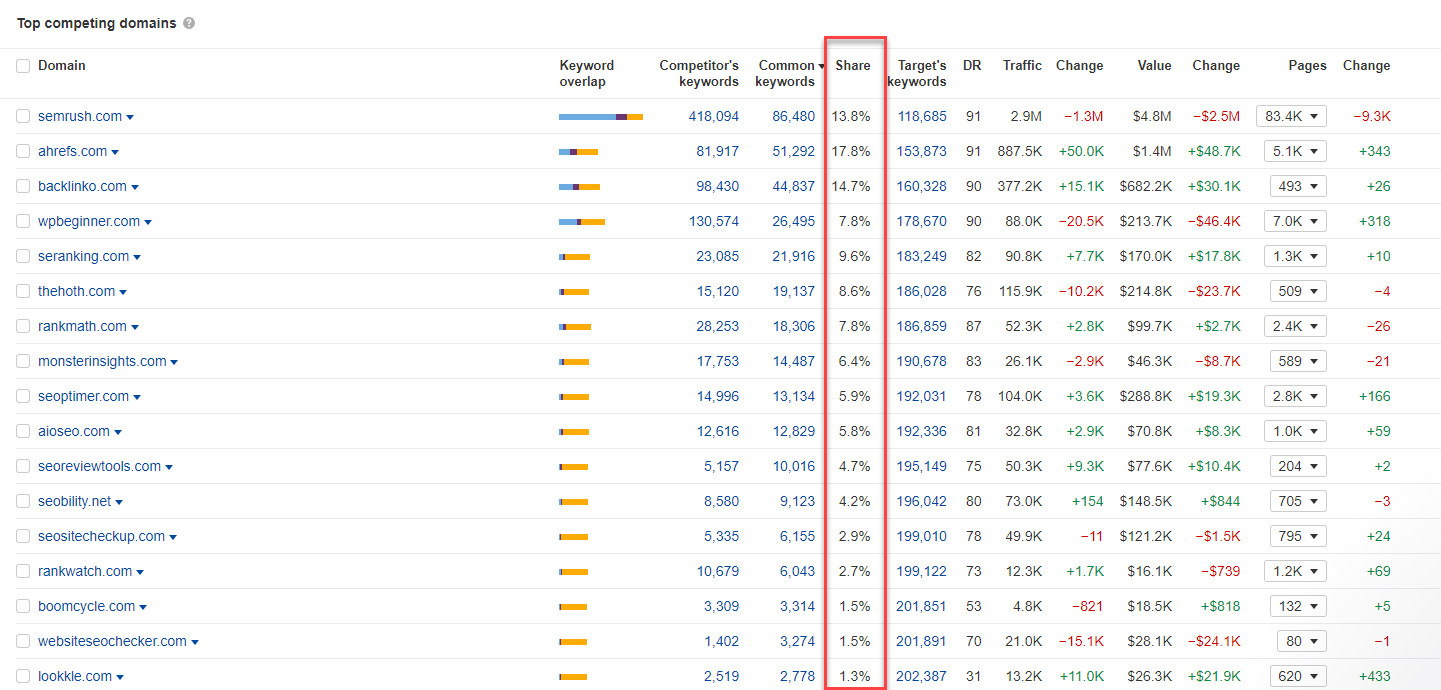
The higher the Share %, the more relevant that site is as your competitor.
Identify sites with the highest Share % by looking at their Backlink profile > Referring domains.
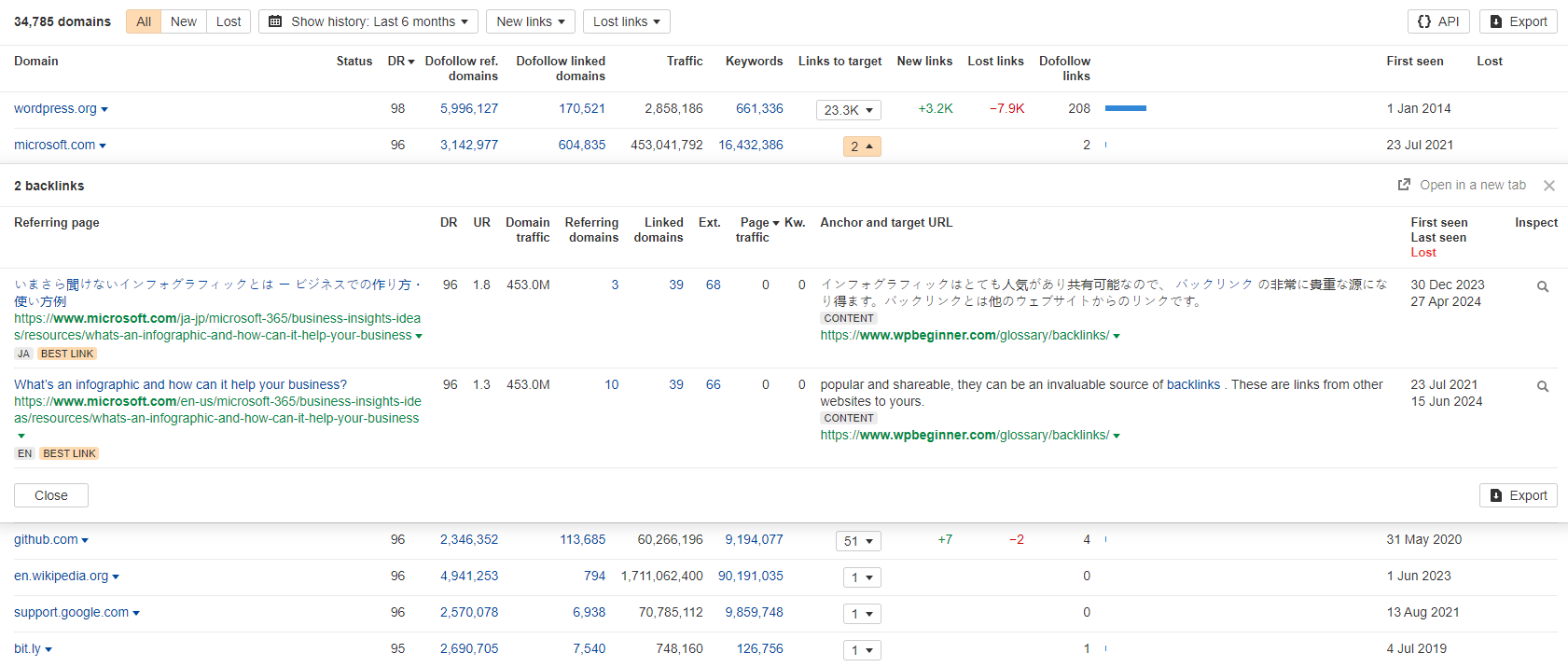
This will show you the domains your competitor has, which page your competitor got a link from the domain, and the sentence it's found by clicking on the drop-down menu under Links to target column. This will give you an idea of the type of backlink your competitor has from that site, which you could use as vital information before starting out your broken link-building campaign.
Do this on all your competitors, export the list of linking domains, and compile them on a list.
To make your job much easier, you can use Ahrefs' Link Intersect feature. It lets you compare your site's backlink profile with your competitors and provides you with a filtered list of domains your competitors have links from but your site doesn't.
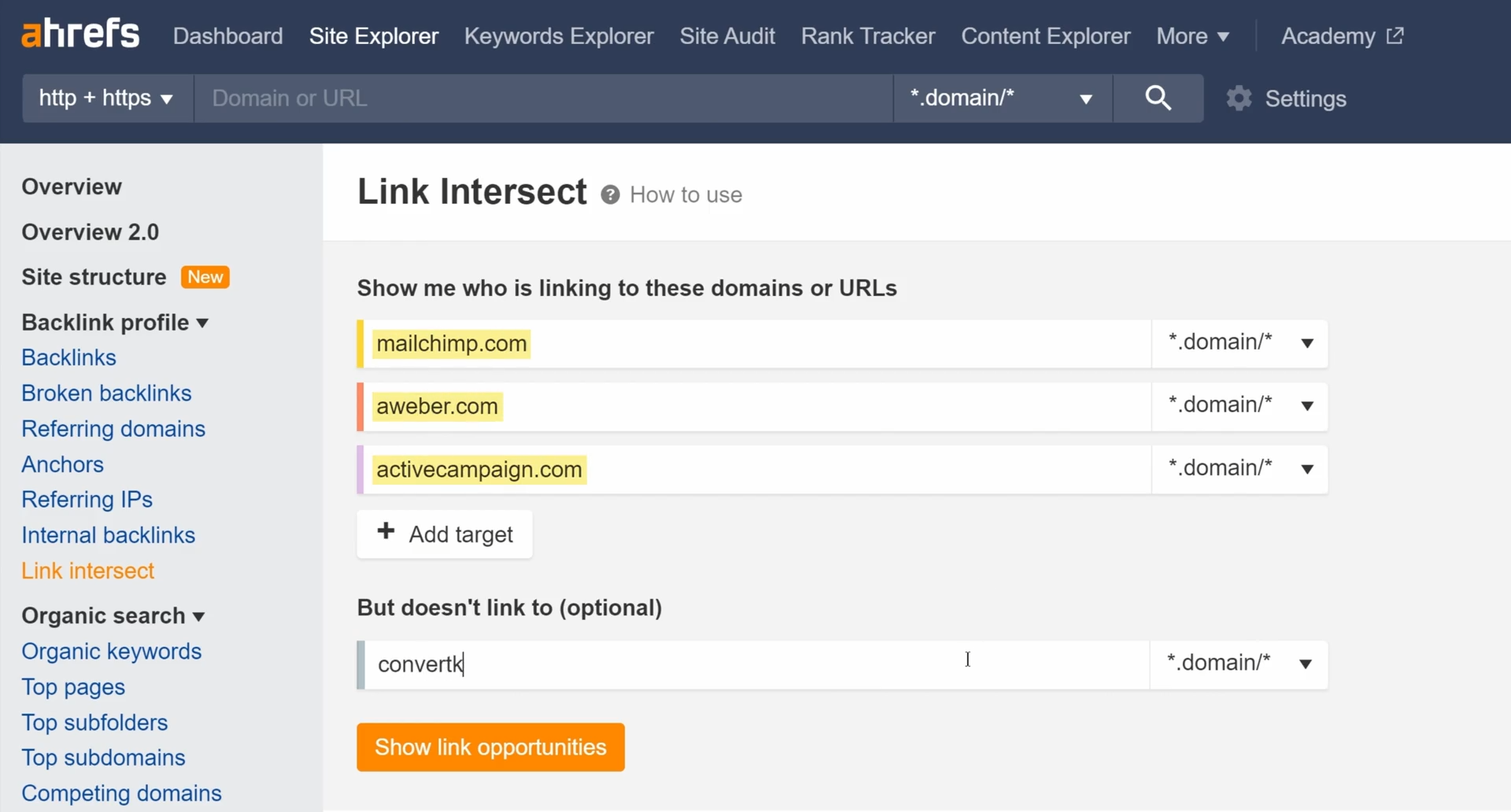
Using the latter allows you to focus on links you don't have. By securing links from these domains, you can be on equal footing with your competitors, if not leapfrog over them on SERPs!
Finding the Hidden Treasure: Identifying Broken Links
Let’s get our hands dirty and get into the nitty-gritty of finding broken pages and links. But instead of manually clicking through every link on these pages, which would take forever, you can use tools to do the heavy lifting.
Using Ahrefs, go to the domain you want to get links from, then click on Outgoing links > Broken links to find broken links. The results will show you the pages on the site have broken links to third-party sites, the anchor text used, and the sentence where you can find the anchor text.
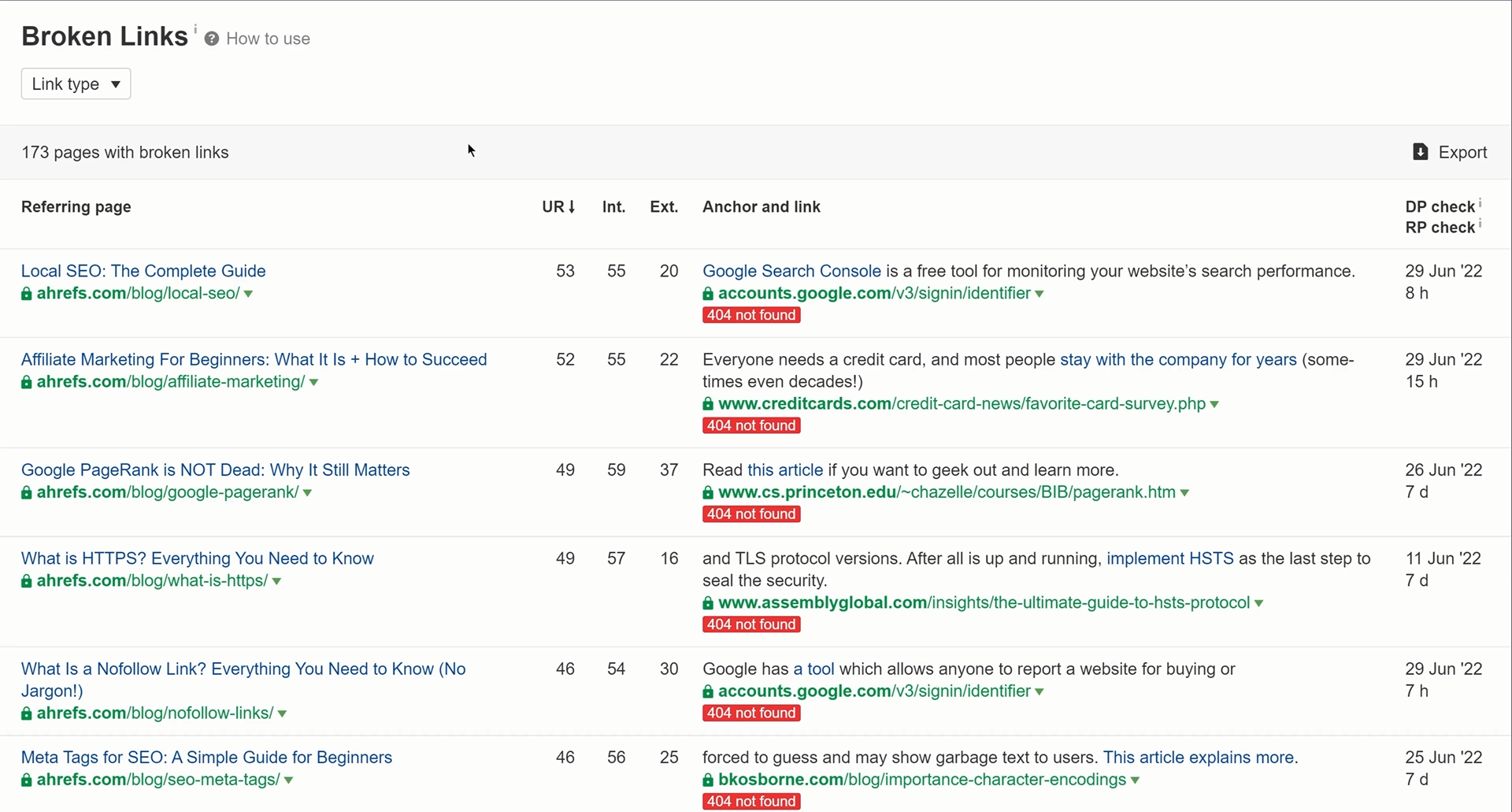
From here, you must visit the page to verify if the link is broken. Ahrefs may have detected a false positive.
Check how many other websites link to that broken page. The more backlinks a dead page has, the more opportunities you have to replicate that link with your content!
The goal here is quality over quantity. It’s better to get one high-quality backlink from an authoritative site than ten low-quality ones from obscure blogs. Be selective, and your broken link-building opportunities will yield much better results.
But don’t just look for any broken links. Look for dead links that are relevant to your content. As mentioned, if you run a fitness blog, a broken link to a page about workout routines is much more valuable than one about cooking recipes. The more relevant the broken link is to your content, the higher your chances of success.
Filling the Void
Now you have identified valuable broken links; it’s time to create a well-optimized blog post that will make website owners jump at the chance to link to you.
This is where your expertise and creativity come into play. Your goal is to recreate the content that the site is linking to, which is returning a 404 page.
More importantly, copying the broken page's content word by word is not enough. You need to make it exceptional – something that makes the website owner think, “Wow, this is even better than what I was linking to before!”
Start by analyzing the content at the broken link. You can use the Wayback Machine to see what was originally there.
Enter the URL of the broken page and look at the dates when the content was up online.
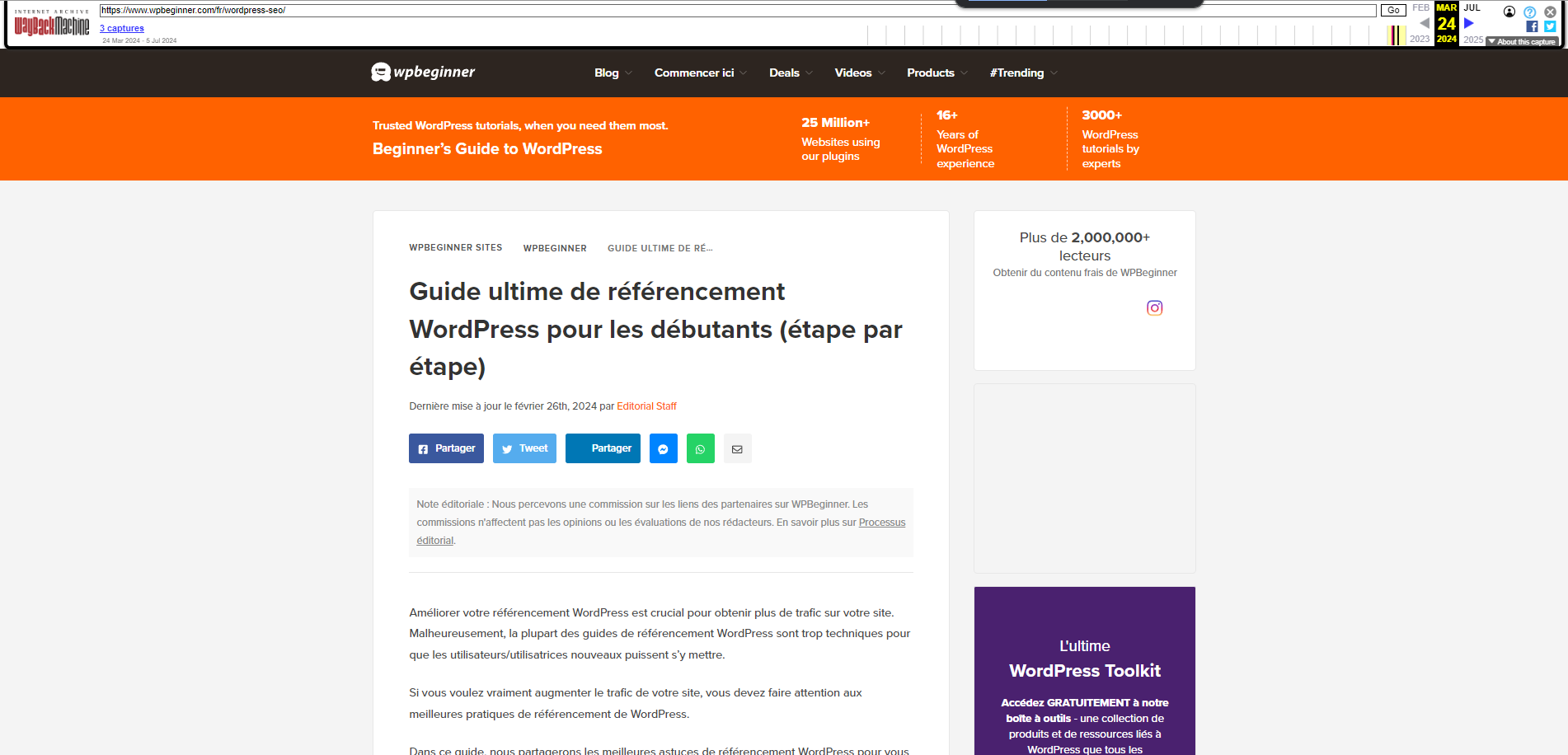
This gives you a blueprint for what the website owner found valuable. But don’t just recreate the old content—improve upon it. Make it more comprehensive, up-to-date, and engaging.
For example if the original content was a list of “10 Tips for SEO” your new piece could be “The Ultimate Guide to SEO in 2024: 25 Proven Strategies”. Add depth to each point, include real world examples and maybe even create custom graphics or infographics to illustrate key concepts.
Your content needs to be a perfect fit for the context of the original link. If the broken link was in an article about social media marketing, your replacement content should fill that gap. The closer your content is to the original context, the higher your chances of success.
And here’s a little secret: you don’t always have to create new content from scratch!
Sometimes, you might already have a piece that fits the bill. In that case, you can simply update and improve your existing content to make it an even better replacement for the broken link.
Writing Compelling Outreach Emails
Writing outreach emails that convert is an art form in broken link building. The key is to write messages that are impossible to ignore. Start with a subject line that grabs attention without being spammy, like “Quick tip about a broken link on your awesome article.”
In the body, get straight to the point by specifying the broken link location and frame your content as a solution not a favour. Personalization is key - show you’ve actually engaged with their content. Offering multiple replacement options can increase your success rate by giving the website owner a choice.
You can even use ChatGPT to brainstorm outreach emails you can use to send to prospects. Even better, request it to create a drip campaign containing different emails, from initial outreach to multiple follow-ups, to help you get started!

I recommend using a tool like Pitchbox to send emails at scale without sacrificing quality. It allows you to personalize emails in bulk, manage your outreach campaigns and track responses.
Pitchbox integrates with SEO tools like Ahrefs to streamline your broken link building workflow from prospecting to outreach. Even when scaling, each email should feel personal and valuable to the recipient.
Tracking and monitoring your outreach performance is key to getting the most out of it. Use Pitchbox’s built in analytics to track open rates, response rates and conversion rates for your campaigns.
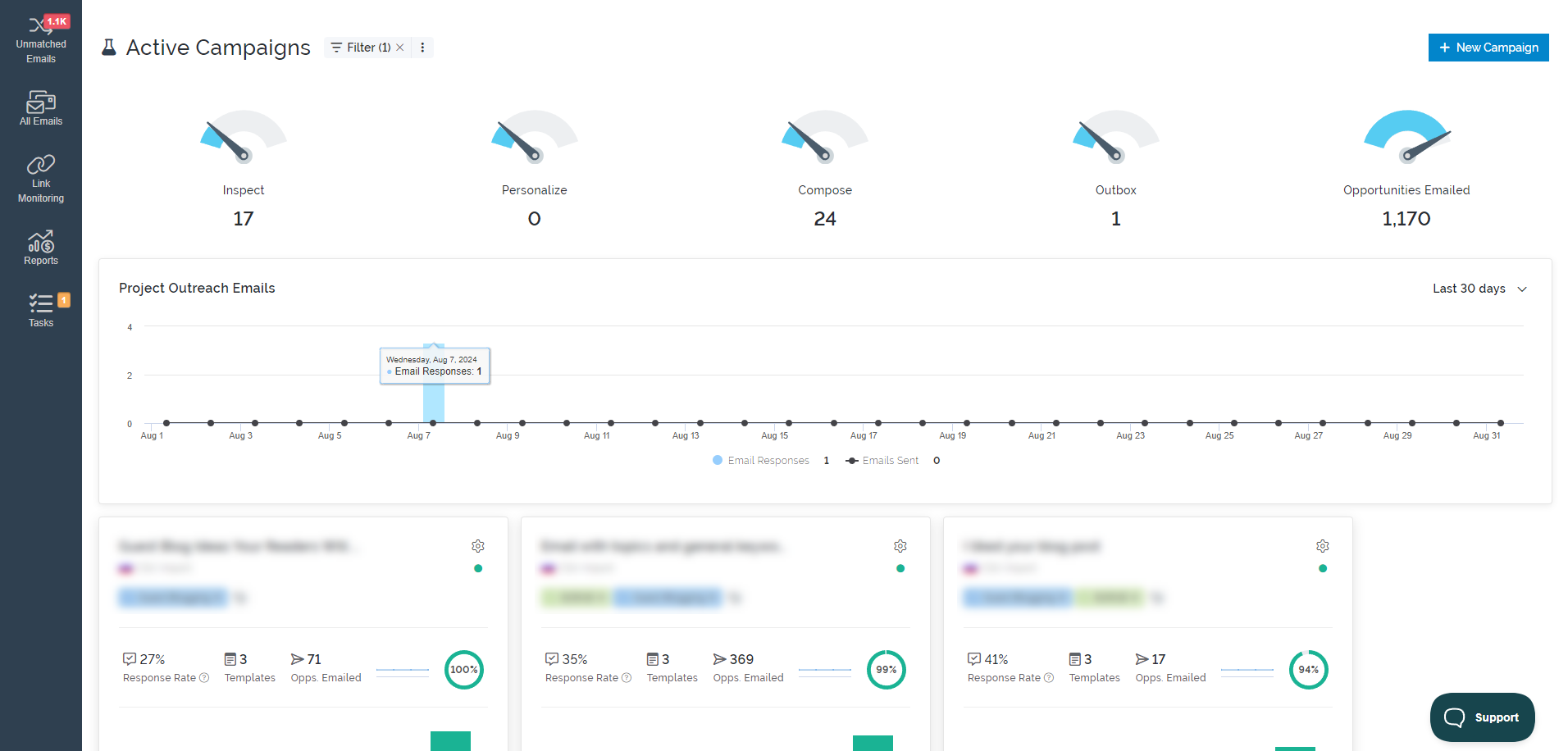
Pay attention to which subject lines and email templates are performing best and continually refine your approach based on this data. A/B test different parts of your emails like subject lines or CTAs to see what works best with your targets.
You’ll see your broken link-building success rate increase over time by continually analysing and optimising your outreach. Always remember to provide a link to your site as a form of appreciation or value exchange, enhancing your SEO by establishing beneficial connections and acquiring valuable backlinks.
Broken Link Building Challenges
While broken link building efforts can be powerful, they’re not without their problems. In this section, we’ll look at some of the common obstacles you’ll face and how to overcome them so your efforts pay off.
Low Response Rates in Outreach
One of the most annoying parts of broken link building is the silence that follows your outreach. You’ve crafted the perfect email, found a golden opportunity and… nothing. It’s enough to make you want to give up.
But here’s the thing: low response rates are part of the game. Website owners get bombarded with emails every day, so it is your job to stand out from the crowd. Try A/B testing different subject lines and email formats. Sometimes, a simple tweak to your approach can make a big difference.
Use ChatGPT to create variants of your outreach emails and see which version gets the best responses.
Don’t be afraid to follow up either. A gentle nudge email a week or so later can often do the trick. Just make sure your follow up adds value – perhaps mention a recent article they’ve published or offer an additional resource. The key is to be persistent without being pushy.
High-Quality Broken Links
Another challenge is finding broken links that are worth pursuing. It’s easy to get excited when you find a broken link only to realize it’s on a low-quality site or irrelevant context.
The solution? Be selective. Quality trumps quantity every time in SEO. Focus on finding broken links on high authority sites in your niche. Use tools like Ahrefs or Moz to check the domain authority of the sites you’re targeting. One high-quality backlink is worth more than dozens of low-quality ones.
Also, pay attention to the context of the broken link. Is it prominent on the page? Does it seem like an important resource? The more valuable the original link seems, the more likely the site owner will be to replace it with your content.
Yes! I’ll add a new subheader under “Common Pitfalls and Challenges in Broken Link Building” for content creation challenges. Here’s the addition:
Content Creation Challenges
Creating replacement content for broken links is more difficult than it seems. The key is not just to match the original content but to surpass it in quality and depth. This often requires a lot of time and resources, especially when you’re targeting multiple broken links across multiple topics.
One mistake is rushing the content creation process and ending up with subpar content that website owners won’t link to. Your content needs to be good enough for site owners to want to update their links.
To overcome this, invest in thorough research and consider bringing in subject matter experts when needed. Also, don’t be afraid to use multimedia elements like infographics or videos to add value to your content.
Another challenge is consistency in content quality as you scale. It’s easy to cut corners when juggling multiple broken link opportunities, but this can harm your success rate and reputation.
Rather, build a content creation system with quality checks and a team of writers and editors to maintain high standards across all your replacement content.
Scaling Broken Link Building
Now you’ve got the hang of broken link building, and you’ll want to scale to get more results. But how do you do that without sacrificing quality or burning out? Let’s look at some ways to take your broken link building to the next level.
Link Monitoring and Outreach Automation
Scaling your broken link building doesn’t mean you have to clone yourself (though wouldn’t that be nice?). Instead, find resource pages and use automation tools to do the heavy lifting for you.
Set up automated alerts for new broken link opportunities in your niche. Tools like Ahrefs can notify you when they find new broken links on sites you’re monitoring. This way, you can be one of the first to outreach with a replacement and increase your chances of success.
For outreach use email automation tools to streamline the process. But automation doesn’t mean sending generic, robotic emails. Use these tools to personalize at scale, insert custom fields for the recipient’s name, website and the specific broken link you found.
Expanding to New Niches and Markets
Once you’ve exhausted opportunities in your primary niche, it’s time to expand. Look for related niches where your content might be valuable. For example, if you’re in the fitness niche, you might look for opportunities in nutrition, wellness, or even productivity.
Don’t forget international markets, either. If you have the resources to create content in multiple languages, you can tap into a whole new world of broken link opportunities. Many SEOs focus only on English-language websites, leaving a lot of untapped potential in other languages.
Scaling is about working smarter, not harder. By automating where possible and expanding your reach, you can build much more broken links without burning out.
Team and Process
Scaling broken link building effectively requires more than tools—it needs a well-oiled machine of people and processes.
Start by building a dedicated team with diverse skills. You’ll need researchers to find broken link opportunities, content creators to create replacement content and outreach specialists to communicate with website owners.
Develop transparent, repeatable processes for each stage of broken link building. Create templates and guidelines for content creation to maintain consistency even when working with multiple writers. Implement a quality control system to maintain high standards as you scale. For outreach, develop easily personalized email templates and a follow-up schedule to maximize response rates.
Training is key to maintaining quality as you scale. Upskill your team on the latest SEO trends, content creation best practices and outreach techniques. Consider implementing a mentorship program where more experienced team members can guide newer ones.
Get in Touch for Your Broken Link Building Needs
Now you’ve got the knowledge of broken link building tactics, you might be feeling a mix of excitement and overwhelm. After all implementing these strategies takes time, effort and expertise. That’s where we come in.
At Charles Floate Training, we’ve been doing broken link building for years. Using these exact strategies and other techniques, we’ve helped many businesses skyrocket their SEO rankings. Whether you’re just starting out or looking to take your SEO to the next level, we can guide you every step of the way.
Our team of SEO experts will help you find the most valuable broken link opportunities, create content to replace those links and craft outreach strategies that get results. We’ll work with you to develop a bespoke link building strategy that matches your business goals and maximizes your ROI.
Ready to unlock the full potential of broken link building? Contact us today to schedule a consultation.

